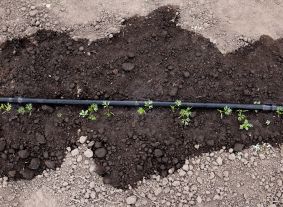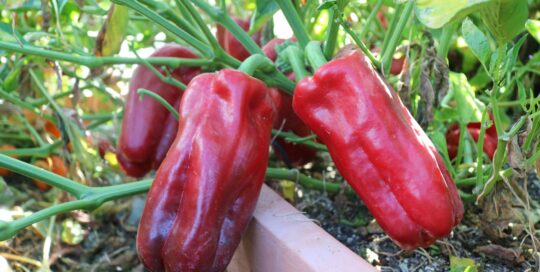Climate Change, Warming Temperatures and Your Garden
Views: 99

In the last “Just Veggies” I discussed one way in which climate change is impacting your garden—and that is by extending the growing season with earlier spring emergence and later dieback in fall. In this edition, I want to talk about how warmer temperatures throughout the growing season can impact your vegetable gardens.
What Warming Temperatures Can Do in the Garden
With warmer temperatures comes a very real threat to the garden. It’s insidious, really, how over the course of several years changes will take place under your nose and with very little fanfare. Some of these changes can be:
- Non-native and invasive plants and insects cropping up in a region where they once could not survive.
- The native or long-grown crops in a region now not able to thrive in the warmer weather.
- A higher demand for water use in the garden.
- Crops that are increasingly stressed due to temperatures and water demand will be in a weaker state, making them vulnerable to pests and diseases.
- Warm temperatures and lack of moisture can cause soils to dry out. Dry soils put the health of our soil’s microbiome—all those good microorganisms that live symbiotically with our gardens’ and landscape’s plants—at risk. A weakened soil microbiome can lead to weakened plants.
How to Counter Warming Temperatures
Climate change and these warmer temperatures we are experiencing have been a slow and steady process. Like the changing environment itself, implementing resilient practices in the garden can be a well-thought-out process. Do what you can, when you can.
What is it you can do?
Implement water-wise practices. Limit water use and use the water you have wisely. Use rain barrels to collect irrigation water. Set up a drip irrigation system to Direct water where it is needed most. Thick layers of mulch will help lower moisture evaporation from your soils.
Use companion planting techniques. Plant heat-loving plants such as tomatoes near more heat-vulnerable crops like lettuces to shade them and lessen the lettuces’ watering needs. Companion planting also helps keep weed populations down because more of the soil is covered by intentional crops.
Choose drought-tolerant varieties. Plant breeders are constantly trialing new cultivars of crop plants to assess and select for certain characteristics. Do some homework on what varieties do well in water-challenged environments and grow those.
Use compost. Compost will help your soil in two ways. First, it increases the soil’s water-holding capacity, which is a very good thing for gardens that are experiencing warmer and drier conditions. Second, it feeds your soil’s microbiome—and is an important component to keeping this micro-flora and micro-fauna alive and healthy. And as a bonus, compost increases the amount of air spaces within the soil’s root profile, also benefiting the soil and everything living in it.
USDA Hardiness Zone Map Changes
Quite literally while I was writing this, a daily newsletter that curates need-to-know news items came into my inbox with the lead story being this piece from West Virginia University Associate Professor of Mycology and Plant Pathology Matt Kasson titled, “Climate change is shifting the zones where plants grow—here’s what that could mean for your garden.” Matt explains more about how the USDA’s Plant Hardiness Zone Map has recently changed due to a warming climate. Pay particular attention to the illustration that shows which areas in the U.S. have changed to the next-warmest half-zone. He also includes some other actions you can take to make your gardens—both veg and landscape—more resilient to the impact of climate change.
Meet Ellen Wells
When you’re raised on a farm, you can’t help but know a thing or two about gardening. Ellen Wells is our expert on edible gardening.…
Ellen's Recent Posts

Pepper Red Impact an All-America Selections Winner






